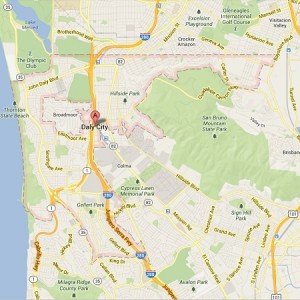
Daly City Mayor Ray Buenaventura, a Filipino-American, said, “The Daly City residents’ central concern is that Daly City must not be divided at all. I thought this meeting was very well attended.”
The County Board of Supervisors created a nine-member boundary adjustment committee after voters changed the County Charter in November. The change required that only voters within a district could elect a supervisor who lives in that same district to represent them. Under the previous system, voters countywide elected all five supervisors.
Buenaventura added that in redrawing Daly City boundaries “there would be a strong possibility that people may not be able to vote for their (own) supervisors.” He told INQUIRER.net: “The community is obviously expressing a strong voice, and I’m glad that we are united and together, in keeping as a whole (front).”
Brushing aside rumors
Supervisor Adrienne J. Tissier (District 5) brushed aside “rumors” and perceptions that the meeting was geared towards cutting the boundaries of Daly City. “Cities can stay the same. We are taking a hard look (at the “majority” minority in the city).”
Under California election laws, districts must be approximately equal in population. In establishing the boundaries of the districts, the County Board of Supervisors may give consideration to factors of topography, geography, cohesiveness, integrity and compactness of territory and community of interests.
The District Lines Advisory Committee acknowledged several concerns during the forum, such as the perceived division of Daly City and the uniqueness of the city’s culture and workforce population of 144,000, of which Filipinos make up a third.
District Demographics provided by Douglas Johnson, president of the research group- National Demographics Corporation, showed that although, Asian Americans made up 53 percent of Daly City’s total voting-age population, followed by Hispanics with 21 percent, the majority of registered voters in 2013 actually had Spanish surnames (28 percent) thus, comprising the major minority of voters, while Asian Americans came in only second (18 percent). But that’s likely because many Filipino Americans were among those with Spanish surnames.
Robert Ruben of Pacifica said that if the major minority community must be created it’s important (for the committee) to focus on equal populations.”
Fear of isolation
Joe Otayde of Daly City Ot concern that “if we spread things evenly and I’m worried that we (will) isolate ourselves (in the process).” Reacting to the demographic information, Otayde added that the Latino and the Asian populations “were overlaid.” “
On hearing the rumor that the city was going to be cut in half, Otayde said, “Filipinos and the Hispanic community—we’re proud of our population. We all work hard to keep our people and our city as a whole; we’re keeping it together. Our people should be together, our kids go to the same school—we must stay together.”
Tissier said the committee had guidelines to follow in addressing all the concerns of the community, and until it deliberates, the specifics could not be provided. “One of the alternative is to do nothing, leave the district boundaries as is.“
Public input important
Tissier encouraged the community to look into the map and share its insight as the initial draft of the plans should reflect public inputs: “We want you to tell us what you want.” She said redistricting has been discussed many times, and voters did not want it. “If the public wants district change, let them decide.”
A similar meeting was held in East Palo Alto on June 25 and one will likewise take place by July in Millbrae. The second round of public consultation will be on August and September after which the committee is expected come up with the final decision.
Johnson said “public input is vital” and encouraged the community to define their interests, share opinions about current district lines and proposed changes by sending e-mails, phone calls and using online tools to provide inputs.